Cairo, a cosmopolitan city – Definitely worth a visit
Regardless of whether you are spending a beach holiday in Egypt or are looking for a city tour at home, we would like to give you a foretaste of the wonderful metropolis of Egypt with a small tour of Cairo’s most impressive sights.
Pyramids of Giza
The Pyramids of Giza are not just one of the most famous and oldest wonders of ancient Egypt but also a highlight of every Cairo tour. To this day, it’s still not clear what kind of construction the world’s largest burial site, built about 4.000 years ago, is. What the Pyramids were built for has become clear since the tombs inside the complex were discovered.
The respective pharaohs had them built during their lifetime as a sign of their power, organization and architectural building skills for their way to the afterlife. Standing at the foot of the pyramids or going inside, you will understand why it was assumed for a long time that the Pyramids were not created by the hands of humans.
Like most of the visitors in Egypt, you probably will first head for the Giza Plateau with the large Khufu Pyramid, the middle-sized Khafre Pyramid and the smaller Menkaure Pyramid. Here you notice how impressive relicts of ancient Egypt are.
In the vicinity:
If you look around the Giza Plateau, you will discover a no less interesting monument: the Sphinx. The statue acts as a guardian of the Giza Valley Temple. The Pyramid Sound and Light Show invites you to catch a fantastic atmosphere and is the perfect place for some photos.
Don’t forget your camera!
Great Sphinx of Giza
A monument, no less spectacular than the Pyramids of Giza, and visited every day on the Giza Plateau is the Great Sphinx of Giza. Visitors will not only be amazed by its size (20 meters in height and 70 meters in length) but also by its shape. The Great Sphinx of Giza has the body of a lion and the head of a human.
The Sphinx is located below the Cairo Pyramids on the famous Giza Plateau and facing east towards the sunrise. The statue, made of massive limestone, has, unfortunately, had a broken nose for decades. To this day, experts argue about the cause.
Experts are also don’t agree about the age of the Sphinx. While some claim the Great Sphinx of Giza is around 4.000 years old, numerous other experts now believe that the mystical statue could be twice as old. For a long time, the body of the Sphinx was covered with sand and not completely freed from it until 1925. For centuries, environmental influences have left their damage mainly on the face of the statue.
In the vicinity:
The Pyramids of Giza are one of the 7 wonders of the ancient world. The massive Cheops Pyramid, the middle Chephren Pyramid and the Mykerinos Pyramid, the smallest of the 3 Pyramids of Giza. On the Giza Plateau located are also 3 not so famous Queen Pyramids that cannot keep up with the enormous size of their 3 neighbors.
The Giza Valley Temple
Close to the Sphinx Temple is the so-called Giza Valley Temple of the Chephren Pyramid, which structure is still in perfect condition to this day.
Like the Cairo Pyramids, the temple complex was built with large limestone blocks and then clad with granite slabs. A path leads you to the two entrances that were previously closed with two large cedar wood doors. A corridor leads from a transverse hall into a pillared hall consisting of 16 columns that support the roof. In ancient Egypt, the t-shaped hall was laid out with white alabaster and illuminated through a narrow opening in the upper walls. The many statues of kings lined the Hall.
One of the statues, made of diorite, you can admire in the Egyptian Museum. This statue, found by Auguste Mariette, is one of the only surviving statues. Most of the other statues have been destroyed.
In the vicinity:
On the Gizeh Plateau, near the Giza Valley Temple, is the Great Sphinx of Giza and the Pyramids of Cheops, Chephren and Mykerinos.
Tahrir Square
Since the revolution in 2011 the Tahrir Square, one of Cairo’s most famous traffic hubs is well-known. Here demonstrators against the government of the time used to gather for months from January to March to announce their protests. It has since become famous around the world as the place of struggle for freedom and democracy.
At that time, the specially organized controls to make the protests peaceful were exemplary. The cohesion of the Egyptians was exemplary, young and old, men – women – children of different faith stood united on the Revolution Square. Tahrir Square has long played an important role as a meeting place for protest rallies. As early as 1952 there was a military coup against the then ruler, the Ottoman Ismael Pascha. The name that still exists today comes from this time: Tahrir Square.
Even 25 years later, during Sadat’s reign, there were protests on Tahrir Square. At that time, there were the so-called “bread riots” against the government. There were also loud demonstrations of disapproval of the American invasion of Iraq in Tahrir Square in 2003. Today you will find a “quiet” Tahrir Square (as far as this is possible in the middle of a metropolis :-))), renovated, green planted and surrounded by cafes.
In the vicinity:
Very close to Tahrir Square (Liberation Square), just a few minutes walk away, is the famous Egyptian Museum, built by the Egyptologist Auguste Mariette in 1858 and opened in 1902 in a neoclassical style. Numerous government buildings are close by, and the main metro intersection is under Tahrir Square.
Egyptian Museum
From Tahrir Square, you can get to the world-famous Egyptian Museum in just a few minutes. Here was a collection of hundreds of thousands of artifacts from ancient Egypt. Since this museum was bursting at the seams, a spacious New Museum was built in Cairo, the National Museum of Egyptian Civilization. In an impressive parade, the treasures and mummies were moved.
The huge statues that welcomed you inside as one of the first antiquities of the excavation sites were fascinating. Every visitor wondered how these massive statues could be made thousands of years ago without mechanical help, similar to the incredible construction of the pyramids.
The grave goods and the golden sarcophagus of Tutankhamun caused another astonishment. How was it possible to make these delicate pieces of gold jewelry at the time? The Egyptian Museum housed a mummy hall. Visitors had the chance to visit this hall optionally. Here mummies were presented under special temperatures, and visitors got some more information about the mummification in ancient Egypt.
There was not enough space to present all of the finds from the excavations in the right way in the old museum. For this reason, the new and very modern National Museum of Egyptian Civilization was built. The plan is to keep both museums open as exhibition spaces.
A stroll through one of the museums will transport everyone back to an ancient time. I’m sure this won’t be your last visit to one of the Egyptian museums, you can spend days here and still discover something new!
In the vicinity:
You are close to the famous Tahrir Square (Liberation Square), a central traffic junction in Cairo. It is also a stop for the metro with which you can reach some destinations in Cairo faster than by car.
National Museum of Egyptian Civilization (NMEC)
For years thousands of artifacts had been stored in the cellars of the Egyptian Museum and kept away from visitors of the museum. Due to a lack of space, the construction of a more spacious museum was planned in 1982. After an invitation of tenders, Egyptian architect El Ghazzali Kosseiba was awarded the contract in 1984.
In the process, they searched for a building site and found a suitable place near the archaeological former city of Al Fustat, which has been part of the “Historic Cairo” and is one of the UNESCO World Heritage Sites since 1979. Again and again, the opening was delayed due to political unrest, including the Egyptian revolution in 2011.
In 2017 the NMEC was partly opened for the first time and gradually equipped with objects from various museums. With the completion of the massive building complex with an exhibition area of around 23,000 square meters, the museum will show artefacts from all phases of human culture in Egypt.
The Japanese architect Arata Isozaki created the exhibition rooms. The outdoor facilities close to the historical area and near the Ain Al Hayat lake were designed by the German architect Hans Dom, that is working for UNESCO. Among the various halls in the museum complex, is the Hall of the Royal Mummies. It has become the resting place for more than 20 mummies who were reburied in a magnificent parade through Cairo.
In the vicinity:
You are in the city Al Fustat, part of “Historic Cairo” and one of the World Heritage Sites since 1979. Close by is the famous Saladin Citadel located on a hill. Built inside is another popular Cairo attraction, the Muhammad Ali Mosque.
Great Egyptian Museum
The Great Egyptian Museum (GEM) is what the Egyptians call an Egyptian gift to humanity. The GEM is located near the famous Giza Plateau and is also known as the Giza Museum.
With its total completion, it will be considered the largest museum in the world. The actual opening of the huge complex, known as the Great Egyptian Museum, was postponed in 2020. For sure its opening will make the worldwide famous Giza Plateau even more attractive to visitors of the world metropolis Cairo. In the international tender, 15.557 designs from 82 countries were submitted. The winner was the Dublin-based Heneghan Peng Architects Group.
After entering the museum complex, a massive statue of Ramses II will greet you. It was transported from the Ramses train station in Cairo right to the entrance of the GEM. After restoration work, the statue welcomes visitors to the museum since 2018. This museum will certainly not only be a magnet for museum lovers. The museum about ancient Egypt also astonished many visitors that are normally not real fans of museums.
In the vicinity:
You are at a point in Cairo with one of the most attractive famous sights, the Pyramids of Giza with the Great Sphinx of Giza and the Giza Valley Temple. A place in Cairo that has now become richer by one attraction, the Great Egyptian Museum.
Museum of Islamic Art
This first-class museum in Cairo may not be as famous as the “Egyptian Museum of Antiquities” on Tahrir Square, but its collection is one of the world’s most impressive of Islamic artifacts. The exhibition houses a selection of more than 80.000 objects and will cast a spell over every visitor.
In 2014, the Museum of Islamic Art suffered serious damage in a bomb attack on the neighboring police headquarters and reopened in 2017, after renovation work.
The museum building shows several architectural arts, such as Frescoes made of fine plaster, a ceiling made of filigree woodwork, artistic ceramic work, and a shard of an Ayyubid bowl, which shows Mary with the image of Christ crucified. The Museum of Islamic Art also houses tools from ancient times, fascinating crafted carpets, Korans, and many other masterpieces.
In the vicinity:
The museum is located 500 meters west of Bab Zuweila, 700 meters southeast of Sharia Muhammad Ali, and only a stone’s throw away from Old Cairo.
Al Azhar
One of the oldest and at the same time most famous mosques is the Al-Azhar Mosque in Cairo. It was built around 970 in the then newly founded city of the Fatimids. Since then, the mosque has been expanded step by step for over more than 1.000 years. Now you can see a building with different architectural styles. However, all these architectural styles harmonize very well with each other.
The Sheikh of the Al-Azhar Mosque is the highest figure of authority among the Egyptian Muslims.
When entering the mosque, there is a door to a burial chamber right at the entrance, with a niche that faces Mecca, a so-called mihrab. If you look at the three minarets of the Al-Azhar Mosque from south to north, they date from the 14th, 15th, and 16th centuries. The last one was built by Sultan Al Ghouri, whose mosque and mausoleum are nearby.
In the meantime, Al Azhar University developed from the madrassa (school) which was founded in 988. It is the second oldest university in the world after the University of El Kairaouine Mosque in Morocco. Al Azhar University is worldwide famous and considered the most prestigious place to study Sunni theology.
In the vicinity:
The famous Al Azhar Park, the “green lung” of the metropolis of Cairo, is located above the Al-Azhar Mosque and University. The park is located on a 30-hectare former rubble dump and opened in 2005. Its founding was supported by the Aga Khan, whose ancestors founded Cairo in 969.
Famous Khan El Khalili Cairo bazaar
In the Islamic part of Old Cairo is one of the oldest and largest markets in Africa, the famous Khan El-Khalili. You visit an oriental market (souq), founded in the 14th century. It originated on a former mausoleum as a caravanserai (Arabic = Khan) and trading center. The name of the bazaar consists of the name and place of origin of its founder: Emir Jarkas Al Chalili (al Chalili = Arabic for Hebron).
Nowadays, you enter Khan El-Khalili through a gate, the only one left from the three original entrances to Khan El-Khalili. The market has a turbulent past (which you can still feel today). In the 15th century, it became famous as a trading center for valuable stones and as a place for the slave trade. The name “Turkish bazaar”, which is often used for the Khan El-Khalili, comes from Ottoman rule. If you look around, the surrounding trading houses still reveal the former prosperity of the area.
While you stroll through the small streets lined with cafes and small shops, let yourself be seduced by the wonderful variety of scents of spices, perfumes, teas, and the wide range of merchants in the oriental world. Egypt is known for its fresh spices and excellent aromatic oils. These oils are used by well-known brands worldwide as a basis for their perfume production. Here you can also enjoy tea or Arabic coffee and a traditional water pipe (Shisha). Enjoy the flair of the Khan El-Khalili bazaar!
In the vicinity:
Near the Khan El-Khalili Bazaar is the Al Hussein Mosque, and it is also not far from the Coptic part of Cairo. Here in the Coptic Part of Old Cairo, you can visit “Abu Serga Church” and the “Hanging Church”.
Abu Serga Church and “Hanging Church”
Abu Serga Church
The beautiful Coptic Orthodox Church of the soldiers’ Saints Sergius and Bacchus (martyred in Syria in the 4th century) is called Abu Serga Church (Abu Sergio) and is located in the Coptic part of Cairo. The Abu Serga Church is one of the oldest churches in Egypt and dates from the 4th century. Several patriarchs were elected here.
In the 11th century, the Coptic Orthodox Patriarch moved from Alexandria to Cairo. At the time, there were disputes over the possible headquarter. The decision had to be made between the St Sergius and St Bacchus Church and the “Hanging Church“. The Patriarch preferred to be consecrated in the “Hanging Church” (headquarters since 1047) and not in the Abu Serga Church (Sergius and Bacchus Church) as it was customary.
According to the story, the church was built on the spot where the Holy Family sought refuge from Herod on their flight. Steps lead into the crypt that is 10 meters deep and is sometimes flooded, depending on the water level of the Nile River. The altar of the church is now on display in the Coptic Museum in Cairo.
A visit is worthwhile for the beautiful old icons in the church alone.
Hanging Church Cairo
Leave the hustle and bustle of Old Cairo behind you and visit the Christian part of the city. Here you can see the famous basilica of the Holy Virgin Mary, probably the most famous Coptic Orthodox Church in Egypt. To this day, masses are held here. The church from the 4th century got the name “Hanging Church” because of the way it was built right on the south walls of the former fortress of Babylon. It almost looks like the church is “hanging” on the walls.
A staircase leads visitors to a narrow passage decorated with impressive images of all the Coptic patriarchs. The “Hanging Church” was used as a headquarter for the Patriarch of Alexandria in the 11th century. Until the 14th century, church leaders were elected, consecrated, and enthroned here (118 church leaders to this day). Some of them found their final resting place here.
The incumbent Tawadros II was consecrated in St. Mark’s Cathedral in Cairo, which today is the seat of the Coptic Patriarchate in addition to the cathedral of the same name in Alexandria. From the gallery, you enter the church through a forecourt with a colonnade decorated with ornaments. The present facade was built in the 19th century after being destroyed and renovated several times. At that time, the central nave was divided into three more columns. The basilica formerly consisted of 1 central nave with 2 side aisles, now consists of 4 aisles.
There are more than 100 icons from different times in the “Hanging Church“. The most famous is the one from St. Mark and dates back to the 15th century. However, the heyday of Egyptian icon painting goes back to the 4th to 7th centuries.
“Kopte” was derived from the Arabic “Qubt” and the Greek “aigyptos”, which means “Egyptian”. Before the Arabs came, all Egyptians were Copts. After that more, and more people converted to Islam, and only the Orthodox Christians were named Copts. Today the Coptic population only counts 6 – 10 % of the total population of Egypt. The Orthodox Christians have their own script (a modified, extended by 8 characters from the ancient Egyptian script, ancient Greek script), which is now only used in the Coptic liturgy.
In the vicinity:
One of the attractions of Old Cairo is the Khan El-Khalili Bazaar. Here you will find everything that an oriental market has to offer. Let yourself be enchanted by the oriental flair. Old handicrafts, Egyptian herbs, spices, and oils await the visitor. In the middle of the bazaar, local cafes serve traditional coffee and tea.
Saladin Citadel and Muhammad Ali Mosque (Alabaster Mosque)
The Saladin Citadel is one of the best-preserved fortresses. Located on a hill, you have an amazing overview of a large part of Cairo. With good visibility, you can even spot the Pyramids of Giza. Below the fortresses are the Sultan Hassan Mosque and the Ibn Tulun Mosque, parts of the Islamic Center of Cairo. The Saladin Citadel, one of the UNESCO World Heritage Sites since 1979 (as part of historic Cairo), has only been open to visitors for around 20 years.
The construction started in 1176 with the Ayyubid king Salah al-Din and could be completed in 1207. The complex served as a residence and was a place of defense against crusaders. At the beginning of the 19th century, the Saladin Citadel became the seat of government of Muhammad Pasha. He declared Egypt’s independence from the Ottoman Empire and had 480 invited Mamluk leaders murdered during a banquet.
Inside the fortress was created:
The Muhammad Ali Mosque (Alabaster Mosque)
After an explosion in the ammunition dump destroyed part of the Saladin Citadel in 1824, Muhammad Ali had a large mosque built in the destroyed area of the citadel. His son Said Pascha completed the building in 1857.
The 82-meter high minarets, visible from afar, were modeled on the great Istanbul mosque. A circular arcade with small vaulted domes lines the forecourt. The fountain in the middle is used for ablution before prayer. A 28-meter high tower with a clock in the courtyard of the mosque, which has not yet worked, is a gift in return from the French king for an obelisk given by Muhammad Ali. The Obelisk is now on the Place de Concorde in Paris.
From there you can go to the Muhammad Ali Mosque. The walls are decorated with alabaster, and this decoration also gave it the name “Alabaster Mosque“. A huge dome with a diameter of 21 meters at a height of 52 meters is surrounded by many small domes. This construct forms the roof of the mosque. In the meantime, the oil lamps in the museum have been replaced with modern electrical lighting.
In the vicinity:
Close to the Ibn Tulun Mosque, the Military Museum, the Police Museum, and the Al-Gawhara Palace is the wonderful Al Azhar Park. Residents of Cairo meet here to spend their free time with friends or family in the countryside.
This is only an excerpt of the most impressive Cairo sights, the capital of Egypt. More beautiful places will follow, so stay tuned!


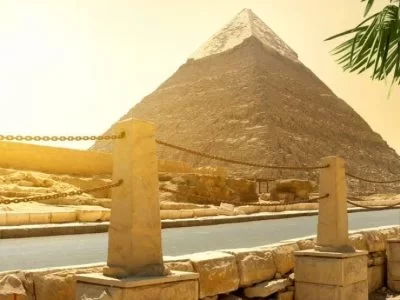
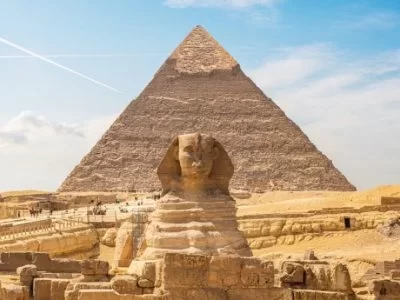
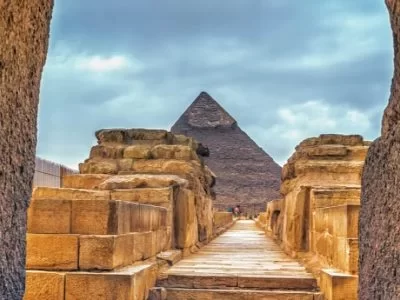
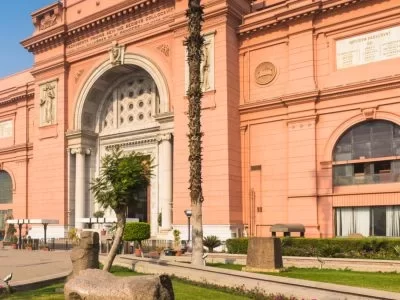
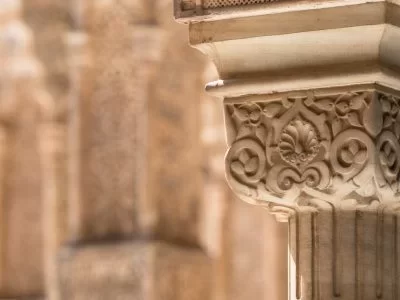
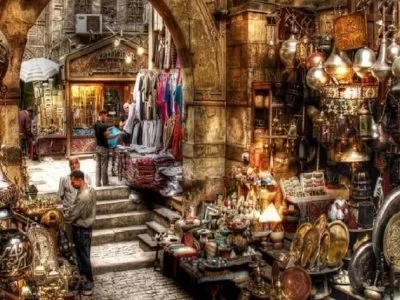
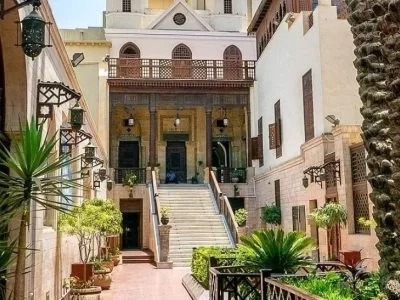
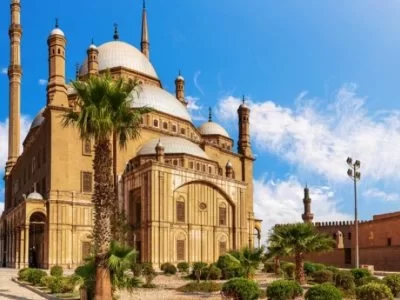

Comment (0)